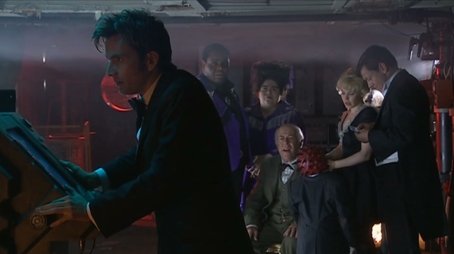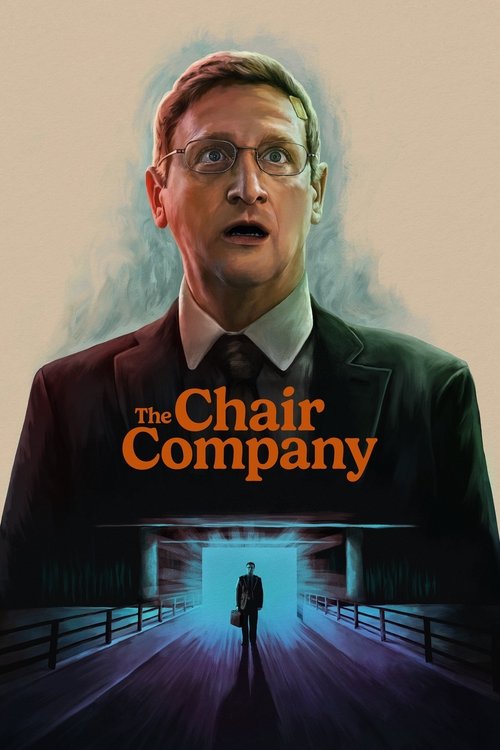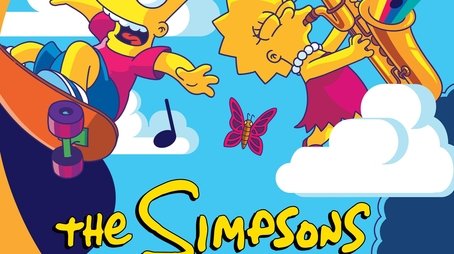
Ask Your Own Question
What is the plot?
The episode begins with the Doctor, played by David Tennant, aboard the TARDIS, which is flying through space. He is in a jovial mood, enjoying the festive atmosphere of Christmas. Suddenly, the TARDIS is pulled off course by a distress signal. The Doctor investigates and finds himself on the spaceship Titanic, a luxurious space cruiser that is celebrating Christmas in style.
As the Doctor steps onto the Titanic, he is immediately struck by the opulence of the ship. He observes the passengers, who are dressed in extravagant outfits, enjoying the festivities. Among them is a woman named Astrid Peth, portrayed by Kylie Minogue, who works as a waitress. The Doctor and Astrid share a brief interaction, where she expresses her dreams of adventure and excitement beyond her current life.
The atmosphere shifts when the Titanic suddenly experiences a catastrophic failure. The ship is attacked by a swarm of hostile robots known as the Host, who are programmed to eliminate the passengers. The Doctor quickly assesses the situation and realizes that the ship is on a collision course with Earth. He takes charge, rallying the remaining passengers to work together to survive.
As chaos ensues, the Doctor encounters several key characters, including the wealthy businessman Max Capricorn, who is revealed to be behind the attack. Max is determined to take control of the ship and eliminate anyone who stands in his way. The Doctor confronts Max, who is revealed to be a cyborg, and learns that he has a personal vendetta against the Titanic and its passengers.
In a tense moment, the Doctor devises a plan to stop the ship from crashing. He instructs the passengers to help him regain control of the ship's systems. They work together, but the Host robots continue to attack, leading to several intense confrontations. The Doctor uses his quick thinking and resourcefulness to fend off the Host, but the situation becomes increasingly dire.
During the struggle, Astrid proves to be a brave ally, assisting the Doctor in his efforts. She shows her determination to survive and protect the other passengers. As they work together, a bond forms between the Doctor and Astrid, highlighting her desire for adventure and her willingness to fight for her newfound friends.
As the climax approaches, the Doctor realizes that the only way to save the ship and its passengers is to sacrifice the Titanic itself. He makes the difficult decision to initiate a self-destruct sequence, which will destroy the ship but allow the remaining passengers to escape. Astrid, understanding the gravity of the situation, chooses to stay with the Doctor, demonstrating her commitment to the cause.
In a heart-wrenching moment, the Doctor and Astrid share a final goodbye as she prepares to help him execute the plan. Astrid bravely confronts the Host one last time, allowing the Doctor to escape with the other passengers. The ship begins to break apart, and Astrid's fate is sealed as she sacrifices herself to ensure the others can survive.
The Doctor, filled with grief and regret, manages to save the remaining passengers just in time. He watches as the Titanic explodes in a brilliant display of light, a stark reminder of the cost of their survival. The Doctor is left to reflect on the loss of Astrid, who had inspired him with her courage and spirit.
In the aftermath, the Doctor returns to the TARDIS, carrying the weight of the events that transpired. He is determined to honor Astrid's memory and continue his journey through time and space, forever changed by the experience. The episode concludes with the Doctor setting off once more, ready for new adventures, but haunted by the sacrifices made aboard the Titanic.
What is the ending?
In the ending of "Voyage of the Damned," the Doctor saves the day by using the TARDIS to stop the Titanic from crashing into Earth. He manages to save a few survivors, including Astrid Peth, who sacrifices herself to ensure the safety of others. The episode concludes with the Doctor mourning the loss of Astrid, reflecting on the cost of heroism and the weight of his choices.
As the scene unfolds, the Doctor, portrayed by David Tennant, stands on the bridge of the Titanic, which is hurtling towards Earth. The ship is in chaos, with passengers and crew scrambling to survive the impending disaster. The Doctor, determined to save as many lives as possible, devises a plan to redirect the ship away from the planet. He communicates with the remaining crew and passengers, rallying them to work together in the face of danger.
Amidst the turmoil, Astrid Peth, played by Kylie Minogue, emerges as a key figure. She is brave and resourceful, showing a deep sense of loyalty to the Doctor and the other passengers. As the Doctor executes his plan, he realizes that the only way to save the ship is to use the TARDIS, which is located on the ship. However, the TARDIS is not easily accessible, and time is running out.
In a moment of desperation, Astrid makes a selfless decision. She volunteers to help the Doctor reach the TARDIS, knowing that it may cost her life. The Doctor, torn between his desire to save her and the urgency of the situation, reluctantly agrees. Astrid's bravery shines through as she faces the dangers head-on, embodying the spirit of sacrifice.
As they reach the TARDIS, the Doctor manages to activate it just in time. The ship is redirected away from Earth, narrowly avoiding catastrophe. However, in the process, Astrid is caught in the chaos and is ultimately lost. The Doctor watches in anguish as she disappears, her sacrifice ensuring the safety of the remaining passengers.
In the aftermath, the Doctor stands alone, grappling with the emotional weight of the events that have transpired. He reflects on the lives lost and the choices made, feeling the burden of his role as a hero. The remaining survivors, including a few passengers who had formed bonds during the journey, are left to process their own grief and relief.
The episode concludes with the Doctor, now more somber and introspective, acknowledging the cost of heroism. He bids farewell to the survivors, offering them hope for the future while carrying the memory of Astrid and the sacrifices made during the voyage. The screen fades to black, leaving the audience with a poignant reminder of the fragility of life and the impact of selflessness in the face of adversity.
Is there a post-credit scene?
In the episode "Series 4 Deleted Scenes: Voyage of the Damned," there is no traditional post-credit scene as one might expect in modern films. Instead, the deleted scenes themselves serve as additional content that expands on the narrative and character interactions from the main episode.
These scenes include moments that were cut from the final edit, providing deeper insights into the characters and their emotional states during the events of the "Voyage of the Damned." For instance, there are scenes that showcase the Doctor's interactions with the passengers aboard the Titanic, highlighting his compassion and determination to save them.
One notable deleted scene features the Doctor reflecting on the loss of life and the weight of his responsibilities, which adds layers to his character and emphasizes the emotional toll of his adventures. The scenes also include interactions with characters like Astrid, showcasing her bravery and the bond that forms between her and the Doctor, which is poignant given the tragic outcome of their journey.
Overall, while there is no post-credit scene, the deleted scenes provide a richer context and emotional depth to the story, enhancing the viewer's understanding of the characters and their motivations.
What deleted scenes feature the character of Astrid Peth?
In the deleted scenes from 'Voyage of the Damned', Astrid Peth, played by Kylie Minogue, has additional moments that showcase her bravery and determination. One notable scene includes her interacting with the Doctor, where she expresses her desire to help save the passengers aboard the Titanic, highlighting her internal conflict between fear and heroism.
Are there any deleted scenes that provide more background on the character of Max Capricorn?
Yes, there are deleted scenes that delve deeper into Max Capricorn's motivations and his ruthless business practices. These scenes reveal his disdain for the human passengers and his obsession with profit, providing a clearer understanding of his villainous nature and the lengths he will go to achieve his goals.
What additional interactions occur between the Doctor and the character of Mr. Copper in the deleted scenes?
The deleted scenes include extended interactions between the Doctor and Mr. Copper, where Mr. Copper's naivety and optimism are contrasted with the Doctor's more cynical view of the situation. These moments add depth to Mr. Copper's character, showcasing his genuine desire to help others despite the dire circumstances.
Do any deleted scenes explore the relationship between the Doctor and the character of the Host?
Yes, there are deleted scenes that provide more context to the Doctor's interactions with the Host, the robotic steward. These scenes highlight the Host's programmed loyalty and the Doctor's attempts to reason with it, emphasizing the tension between human emotion and robotic efficiency.
What moments in the deleted scenes highlight the emotional stakes for the passengers aboard the Titanic?
The deleted scenes include poignant moments that emphasize the emotional stakes for the passengers, such as scenes where they express their fears and hopes for survival. These interactions create a sense of camaraderie among the characters, making their plight more relatable and heightening the tension as the disaster unfolds.
Is this family friendly?
"Doctor Who: Series 4 Deleted Scenes: Voyage of the Damned" contains several elements that may be considered objectionable or upsetting for children or sensitive viewers. Here are some aspects to be aware of:
-
Death and Destruction: The deleted scenes may include moments that depict characters in peril or facing death, which could be distressing for younger viewers.
-
Tension and Fear: There are scenes that build tension and suspense, potentially causing anxiety, especially for sensitive children.
-
Emotional Moments: Characters experience loss and grief, which may evoke strong emotions and could be upsetting for some viewers.
-
Mild Language: There may be instances of mild language or phrases that could be inappropriate for younger audiences.
-
Scary Creatures: The presence of alien beings or monstrous figures can be frightening, particularly for children who are sensitive to such imagery.
Overall, while the content is not overtly graphic, the emotional weight and themes of danger may require parental guidance for younger viewers.











